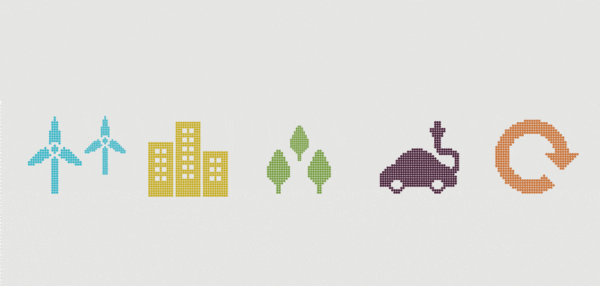Exploring the natural capital debate—Creating a space for conversation about conservation across boundaries?
The search for innovative ways of tackling sustainability and conservation challenges while supporting local communities and livelihoods has brought together a group of researchers from Colombia, Mexico, Peru and the UK. A diverse group of people from different disciplines within both academia and practice met to debate and explore the notions of natural capital and social innovation. Summarising the workshop, Fergus Lyon is reflecting on how the concept of natural capital can be used (and abused).
There has been ongoing debate within the environmental movement about how to engage different perspectives and disciplines. While conservationists and environmental campaigners have fought hard to raise awareness of environmental destruction, the increasing evidence of climate change and biodiversity loss demonstrates the need for alternative approaches for having conversations about conservation. At the Centre for the Understanding of Sustainable Prosperity, we aim to explore how we can live well on a finite planet and within ecological limits of the world and this requires us to develop an interdisciplinary and transdisciplinary programme that can foster debate and discussion. Nowhere is this challenge greater than in the divide between ‘deep green’ conservationists and policy makers or business leaders who advocate market solutions.
At the same time, there have been innovations in conceptualising the environment and attempts to bring in ideas that have appeal across the different camps. In particular, the concept of “natural capital” is increasingly used in policy making and business circles to denote and account for the planetary stock of renewable and non-renewable natural resources, including geology, soils, air, water and all living organisms. The related concept of ecosystem services captures how natural capital assets provide people with goods and services, such as clean water, fertile soil or diverse landscapes.
As I discuss below, some see the notion of natural capital as an unwelcome colonisation of the environmental space by the language of markets and business with the associated risk that this concept is used to distort policy and practice in ways that threaten to further damage the environment in the long term. Pragmatic advocates of the concept, on the other hand, see it as one of many tools for tackling sustainability issues and overcoming the historical disengagement of markets from considerations of environmental sustainability. They identify the danger of the proponents of different perspectives not talking to each other, resulting in deadlock and the continuation of ‘business as usual’ policy that fails to grapple with the fundamental challenges. Within CUSP we also debate these issues by bringing together people from each side of the debate.
The case for natural capital
The concept of natural capital has evolved in response to a long-standing critique of prevailing economic theory, accounting practice and policy – that the under-valuing of nature has given rise to the ‘externalities’ of pollution and over-exploitation. More recent contributions identify a lack of investment to nurture and grow natural capital. To address this, there is a need to shed light on the range of ecosystem services that provide benefits to humans and the wider world. It aims to cut across boundaries to ‘illuminate hidden value’ in these ecosystem services with value defined as economic, environmental, social, cultural benefits. It is argued that quantitative and monetary values are needed to ensure that the environment is included in economic policy and business decision making, although qualitative assessments of things that cannot be valued are also necessary.
The case against natural capital
Critiques of the concept point out that the quantitative and monetisation techniques are inappropriate, ill-conceived and potentially damaging. Such attempts at valuation only consider the natural world in terms of its instrumental and economic value to humans, thus ignoring non-humans, and inevitably falls flat in attempting to put a price on elements of nature that have their own intrinsic value and are essentially ‘unpriceable’. Increasing attempts to measure are accompanied by the risk that those elements of natural capital that are most amenable to monetisation come to dominate the attention of policy makers who demand and prioritise ‘hard’ evidence. For example, there is growing recognition of the value of tree planting for the amelioration of flood risk, but it is much more problematic to quantify the benefits of preserving biodiversity, particularly where threatened species are less ‘glamourous’ such as rare beetles. Furthermore, there are concerns that the use of the concept of ‘capital stocks’ leads to the assumption that one ecosystem service is substitutable with another, or that natural capital can be replaced with physical or human capital to maintain human welfare. This ignores the problem of irreversibility, where feedback loops can lead to the destruction of ecosystems that are close to tipping points.
Starting a conversation
All sides of the debate are keen to have a conversation and there is a risk that this concept is dividing conservationists at a time of the greatest need for addressing sustainability challenges. It also demonstrates the diversity of approaches within the environmental movement. Each player comes to the debate with their own intellectual and practical background, and I like to understand these backgrounds as different mixes of values, norms, and practices. These can be referred to as the ‘logics’ that shape our individual interpretations and overall understandings of the world. For example, there can be ecological logic that values the wonders of nature. There can also be a logic of the market which has particular sway with business leaders and many politicians. There are professional logics that inform the perspectives of different types of academics, campaigners, conservationists and policy makers. Progress towards a fairer and more sustainable world requires the creation of more spaces where these different, and sometimes contradictory, logics can be brought together to engage in constructive dialogue.
Natural capital is being promoted as a means for renewed understanding of nature that is explicitly aimed at bringing in an audience that has strong market logic dominance. But combining logics is very difficult, as it requires going beyond engaging those already converted to a particular view point in order to enrol others. The continued environmental destruction occurring around the world shows how the environmental movement has failed to create this conversation with those whose main loyalty is to the logic of the market. The question remains whether natural capital can create the space to combine these logics. On the one hand, it is bringing the natural world into the management of capitalism, whereas on the other, it is bringing capitalism into the management of nature.
To reject or engage
The natural capital workshop in Colombia like the wider programme of research at CUSP encompasses a very broad range of topics involving people from different disciplines and professions. The 60 people involved in the CUSP programme are all focused on the concept of flourishing while living within the resource and ecological limits of the planet. The CUSP research brings us into contact with a wide range of audiences from different professions and contexts, including business and policy making, where the concept of natural capital is increasingly used as a way of bringing biodiversity and ecosystem services together with livelihoods and business. CUSP is also contributing to the reconceptualisation of national accounting, providing an alternative to the preoccupation with GDP. It can also be seen that the concept is bringing together UK wildlife trusts and conservationists with businesses and policy makers.
However, there is also the need to be open to different ways of conceptualising nature, including those that reject the language of economic value and ecosystem services. There is a real danger of concepts such as natural capital being used in a reductionist way that only recognises nature in terms of economic valuations of specific ecosystem services, while the intrinsic value of nature and importance of peoples’ relationships with geographical place and community is ignored. More critical voices see it as a colonisation with winners and losers. Furthermore, there is concern that the language of ‘capitals’ risks imposing a particular ideology on debates around the management of nature.
By combining the concept of nature with the concept of capital, natural capital is being used by certain grous of conservationist, business and policy as a ‘boundary concept’ with different perspectives – one that brings together people who have not previously been engaged in such conversations. For example, people from both the conservation and business spheres are finding it a way to start conversations. However, at this moment there is a need for the critical voices examining the risks from using the concept, just as there is the need for finding ways of starting conversations that engage different parts of the sustainability debate.
I have found natural capital has been a useful concept in bringing together the community of researchers and practitioners from across Latin America and the UK. The concept of ecosystem services can bring together ecological, social-cultural and economic dimensions and therefore creates the space for conversations and debate. The British Council funded workshop in Colombia examined how recent social innovations are demonstrating the close interrelation between sustainability and social change. There are inspiring examples of Colombian towns using the Cittaslow concept to rebuild their environment and local economies after terrible conflicts, and of the application of the concept of Buen Vivir (the good life) to refocus community conservation activity. Addressing sustainability in difficult times requires the breaking down of the cultural, professional and disciplinary boundaries and creating space for the sort of conversations needed to inform effective change.



